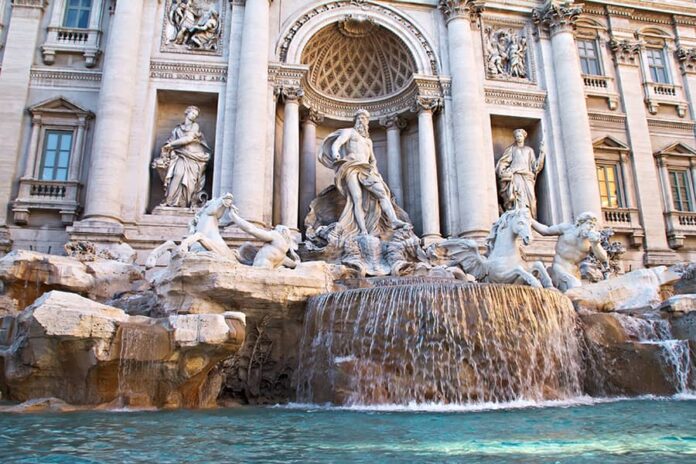Rome is undergoing significant renovations in preparation for a major religious celebration next year. Tourists who wish to toss coins into the Trevi Fountain are currently required to throw their coins over a plastic barricade into a temporary pool while the fountain is drained for upkeep. This plain, rectangular container made of plywood has received a variety of responses from visitors. I think it’s lovely that people can still participate, remarked Marianna Strekstadt, who was visiting from the Netherlands on Friday.
In contrast, Daniela Carbone described the makeshift pool as unattractive but still gave her children some coins to toss in. We have to keep the kids happy, she explained. According to local legend, throwing a coin into this Baroque fountain guarantees a return visit to Rome, with this tradition generating around 1.5 million euros annually, which has been donated to the Catholic charity Caritas for fifteen years.
So why all the construction in Rome?
The ongoing maintenance is part of an extensive beautification initiative aimed at preparing the city for next year’s Jubilee—a significant event led by the Roman Catholic Church that occurs every 25 years. Starting on Christmas Eve (December 24, 2024) and concluding on Epiphany (January 6, 2026), up to 35 million pilgrims are anticipated to visit Rome seeking forgiveness and renewal during this period.
Consequently, tourists this year have encountered numerous closed roads and monuments enveloped in scaffolding and construction barriers. In July, Mayor Roberto Gualtieri informed Reuters that there were an unprecedented 3,200 public construction projects underway in Rome. Billions of euros from national and EU funds are being invested not only in revitalizing iconic historical landmarks but also in enhancing infrastructure such as transportation and waste management.
As the Vatican’s Jubilee Year approaches, visitors will have access to a new AI-powered virtual assistant named Julia through WhatsApp and other messaging apps; its purpose is to guide tourists towards lesser-known attractions while alleviating pressure on popular sites.
To manage tourist traffic at the Trevi Fountain effectively, city officials are planning measures that will restrict access around it. Tourists will need to make online reservations and pay an entry fee of €2 for access; once inside, they will have half an hour to enjoy their time at the fountain.
Currently, limited access is allowed as maintenance continues—this may foreshadow the introduction of fees set for implementation in 2025. Although drained, visitors will soon be able to walk across a newly constructed glass-and-steel pathway offering them a fresh view of this iconic monument. The reservation system represents just one aspect of Rome’s strategy to address overcrowding among tourists.

